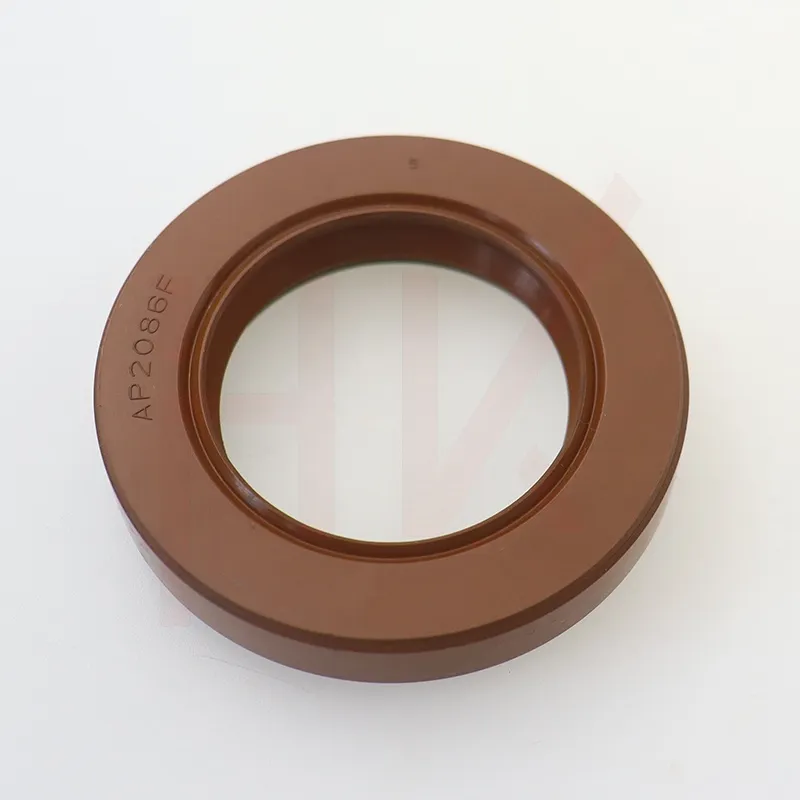Ago . 12, 2024 08:32 Back to list
Choosing the Right Oil Seal for Your Rotating Shaft Applications and Performance Considerations
Oil Seals for Rotating Shafts Essential Components in Machinery
Oil seals, also known as shaft seals, are crucial components in various mechanical systems. They serve to prevent the leakage of lubricants, such as oil, from the machinery, while simultaneously keeping out contaminants. This dual function is essential, especially in applications involving rotating shafts, as it ensures the longevity and efficiency of the equipment.
The Structure of Oil Seals
Oil seals typically consist of a rubber or elastomeric material that forms a flexible lip, which is pressed against the rotating shaft. This design creates a barrier, effectively sealing the internal lubricant while allowing the shaft to rotate freely. Many oil seals are reinforced with a metal casing to provide structural integrity and protect against environmental factors.
When selecting an oil seal for a rotating shaft, there are several design factors to consider, including the seal’s diameter, width, and tolerance. Additionally, the material composition of the seal must be suitable for the operating environment, including factors such as temperature, pressure, and the type of fluid being sealed.
Types of Oil Seals
Oil seals come in various forms, tailored to specific applications. Some common types include
1. Lip Seals The most prevalent type, lip seals feature a single or double lip design. They are effective in preventing the escape of oil and the entry of dirt and moisture.
oil seal for rotating shaft

3. Labyrinth Seals While not traditional oil seals, labyrinth seals use a complex pathway to impede contaminant ingress and retain lubricant, making them suitable for high-speed applications.
4. U-Cup Seals Often used in hydraulic applications, U-Cup seals provide a tight fit against the shaft and effectively prevent fluid leakage.
The Importance of Proper Installation
The effectiveness of an oil seal largely depends on its proper installation. Incorrect alignment or improper handling can lead to premature wear, leakage, or complete seal failure. It is essential to clean the shaft and the sealing surface thoroughly before installation to avoid debris interference. Furthermore, ensuring that the seal is positioned correctly in its housing can prevent operational issues that may arise from misalignment.
Applications of Oil Seals
Oil seals are ubiquitous across many industries. They are commonly found in automotive applications, such as engines and transmission systems, where they help maintain an optimal lubricant environment. In manufacturing and industrial equipment, oil seals are vital in hydraulic systems and gearboxes, safeguarding components from oil loss and contamination. Even in household appliances like washing machines, oil seals play a critical role in maintaining performance.
Conclusion
In summary, oil seals are indispensable components in systems with rotating shafts. Their ability to prevent lubricant loss and protect against contaminants not only enhances the performance of machinery but also prolongs its lifespan. Understanding the types of oil seals available, their proper installation, and their applications in various industries is essential for engineers and technicians alike. Investing in quality oil seals and ensuring they are properly maintained will lead to improved operational efficiency and reduced downtime in mechanical systems.
-
TCN Oil Seal Metal Ring Reinforcement for Heavy Machinery
NewsJul.25,2025
-
Rotary Lip Seal Spring-Loaded Design for High-Speed Applications
NewsJul.25,2025
-
Hydraulic Cylinder Seals Polyurethane Material for High-Impact Jobs
NewsJul.25,2025
-
High Pressure Oil Seal Polyurethane Coating Wear Resistance
NewsJul.25,2025
-
Dust Proof Seal Double Lip Design for Construction Equipment
NewsJul.25,2025
-
Hub Seal Polyurethane Wear Resistance in Agricultural Vehicles
NewsJul.25,2025
-
The Trans-formative Journey of Wheel Hub Oil Seals
NewsJun.06,2025
Products categories
















